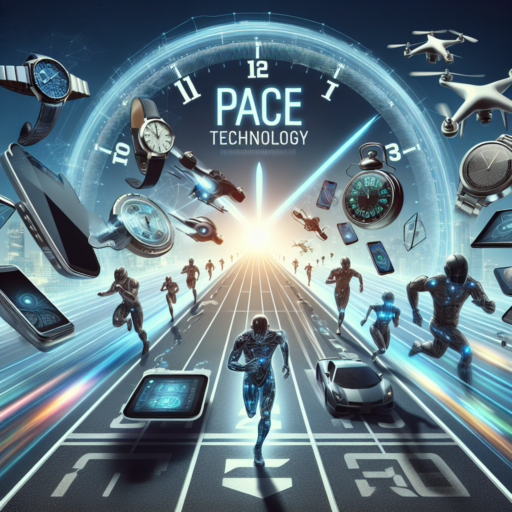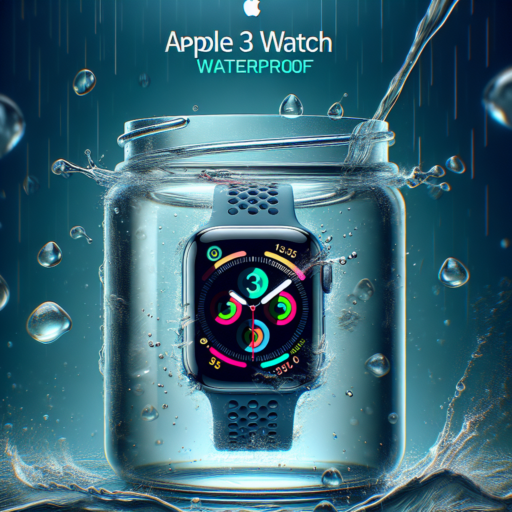Introduction to Watch Technologies: Navigating the Evolution
The world of watch technologies has continuously evolved, becoming a fascinating journey of innovation and style. From mechanical marvels that are centuries old to the digital powerhouses of today, the evolution of watch technologies mirrors the progress of human ingenuity itself. As we navigate through the myriad advancements, it becomes evident that watches are more than just time-telling devices; they are a reflection of cultural shifts, fashion trends, and the relentless pursuit of precision and convenience.
At the heart of this evolution is the transition from mechanical to electronic timekeeping mechanisms. Mechanical watches, with their intricate systems of gears and springs, laid the groundwork for the precision in timekeeping. However, the advent of quartz technology in the 20th century revolutionized the industry, offering unprecedented accuracy powered by electronic oscillators. This leap not only transformed how watches operate but also how they are manufactured, making them more accessible to a broader audience.
Today, the landscape of watch technologies encompasses a broad spectrum from luxury mechanical watches that exemplify craftsmanship to smartwatches that encapsulate the pinnacle of technology integration. These smartwatches, equipped with capabilities ranging from fitness tracking to mobile notifications, exemplify how far watch technologies have come. They are no longer solely focused on timekeeping but have embraced a multitude of functionalities that cater to the demands of the modern user.
The Latest Innovations in Smartwatch Features and Capabilities
The realm of wearable technology is constantly evolving, with smartwatches at the forefront of innovation. Manufacturers are tirelessly working to enhance the user experience by introducing groundbreaking features and capabilities. These advancements aim to not only improve the functionality of smartwatches but also to seamlessly integrate them into our daily lives.
Enhanced Health Monitoring Features
One of the most significant areas of development in smartwatch technology involves health and wellness tracking. Modern smartwatches now come equipped with a wider array of sensors capable of monitoring everything from heart rate and blood oxygen levels to stress and even sleep patterns. The newest ECG and blood pressure monitoring functionalities are transforming these gadgets into vital healthcare partners, allowing users to keep a closer eye on their health metrics.
Expanded Connectivity and Smart Features
Beyond health tracking, smartwatches have become more adept at bridging the gap between smartphones and wearers. Enhanced connectivity features such as LTE/4G support enable users to leave their phones behind while staying connected through calls, texts, and app notifications. Furthermore, the integration of voice assistants and the ability to control smart home devices directly from the wrist are making smartwatches more indispensable. Innovators are continuously working on improving battery life and user interfaces to accommodate these sophisticated functionalities without compromising performance.
How Wearable Technologies Are Reshaping Our Daily Lives
In an era where digital interconnectedness is ubiquitous, wearable technologies have emerged as pivotal instruments in the transformation of our daily lives. These devices, ranging from fitness trackers to smartwatches, are not just altering our personal health management but are also reshaping our social interactions and productivity levels.
Fitness trackers and smartwatches, for instance, are on the frontline, empowering individuals with detailed insights into their health metrics. Users can monitory their heart rates, track sleep patterns, and even receive nudges towards a more active lifestyle. This personal health data, when utilized effectively, fosters a culture of health consciousness and proactive wellness strategies.
Moreover, the rise of wearable technologies has given birth to a new dimension of convenience in the realm of communication and productivity. With functionalities like receiving calls, accessing emails, and managing calendars directly from their wrist, users find a considerable portion of their daily tasks streamlined. This seamless integration of technology into our lives not only enhances efficiency but also paves the way for more enriched social connections as we remain more accessible than ever.
The Impact of Health and Fitness Apps on Watch Technologies
The integration of health and fitness apps into watch technologies has significantly transformed the way users interact with their smartwatches, making them an indispensable tool for tracking and improving their physical wellbeing. The evolution of these apps has pushed manufacturers to incorporate advanced sensors and software that support a wide range of health indicators, from heart rate monitoring to sleep tracking. This development represents a convergence of technology and personal health, where the capabilities of a watch extend far beyond simply telling time.
Moreover, the demand for precise and real-time health monitoring has catalyzed the growth of sophisticated wearables. Today’s smartwatches, equipped with health and fitness apps, offer a personalized coaching experience, guiding users through their fitness journeys with custom workout plans, reminders, and motivational insights. These features have not only enhanced user engagement but also fostered a more proactive approach towards health and fitness. The capability to monitor one’s health metrics has empowered users with knowledge, making it easier for them to set realistic fitness goals and achieve them.
Additionally, the social integration offered by these apps has introduced a novel aspect of community support and competition. Users can share their achievements, participate in challenges, and compare progress with friends, which adds a new layer of motivation. The significance of health and fitness apps on watch technologies is evident in the seamless blend of functionality and social interaction they offer, promoting a healthy lifestyle through innovative tech solutions.
Understanding Watch Operating Systems: Wear OS, watchOS, and Others
When exploring the world of smartwatches, understanding the various operating systems (OS) that power these devices is crucial. The two giants in the field, Wear OS by Google and watchOS by Apple, dominate a significant portion of the market. However, they are not alone, as other competitors offer unique features and experiences tailored to specific needs and preferences. In this comparison, we’ll delve into the key functionalities and distinct differences between Wear OS, watchOS, and other available operating systems, aiding in making an informed choice.
Wear OS
Developed by Google, Wear OS stands out for its integration with the broader Google ecosystem. This includes services like Google Assistant, Google Maps, and Google Pay, providing a seamless experience across devices. Wear OS is compatible with both Android and iOS devices, although the functionality might be limited when paired with an iPhone. The platform is known for its customizable faces, allowing users to tailor their watch’s look to their personal style.
watchOS
At the heart of Apple’s lineup, watchOS is designed exclusively for the Apple Watch. It boasts a tight integration with iOS, delivering a cohesive experience that includes health tracking, Apple Pay, and the Siri voice assistant. The Fitness and Health apps on watchOS are particularly robust, making it a favorite among users who prioritize these aspects. Moreover, with each iteration, Apple introduces new features and improvements, keeping the platform fresh and engaging for its users.
Beyond these two, there are other operating systems like Samsung’s Tizen for its Galaxy Watch series and Garmin’s proprietary OS for fitness-centric wearers. Each brings something distinct to the table, from Tizen’s rotating bezel navigation to Garmin’s in-depth sport tracking features. Understanding the strengths and limitations of each system can aid significantly in choosing a smartwatch that best fits your lifestyle and needs.
Comparing Traditional Watches with Modern Smartwatch Technologies
As we delve into the intricate comparison between traditional watches and modern smartwatch technologies, it’s essential to note the vast differences that set them apart. Traditional watches, heralded for their craftsmanship and elegance, offer a timeless accessory that often carries sentimental value. Conversely, smartwatches bring a suite of functionalities beyond mere timekeeping, integrating seamlessly with our digital lives.
Functionality and Features
Traditional watches are celebrated for their precision in timekeeping, with some of the high-end models boasting features like moon phase indicators, chronographs, and perpetual calendars. These mechanical marvels are a testament to centuries-old engineering skills. On the other hand, smartwatches serve as an extension of our smartphones, offering notifications, fitness tracking, GPS navigation, and even the ability to make calls or respond to messages directly from your wrist. The convergence of technology in smartwatches represents a leap towards the future of personal devices.
Design and Aesthetics
When it comes to design, traditional watches have a vast array of styles, from the sleek and modern to the intricate and vintage. They convey a sense of personality and status, with materials like gold, silver, and diamond often used to elevate their appearance. Smartwatches, while initially criticized for their homogenous designs, have seen significant improvements, offering customizable faces and straps that can match personal style. However, the technological nature of smartwatches often dictates their form, which can limit the range of designs when compared to the artistic freedom seen in traditional watchmaking.
In exploring the appeal of traditional watches versus smartwatches, it’s clear that the choice often boils down to a matter of personal preference and lifestyle needs. Traditional watches embody craftsmanship and heritage, while smartwatches highlight innovation and functionality. As technology progresses, the gap between these two worlds continues to blur, offering consumers an ever-evolving landscape of wrist-worn timepieces.
Key Watch Technologies for Enhancing Connectivity and Productivity
In the realm of wearable technology, smartwatches have emerged as indispensable tools for enhancing connectivity and productivity. These devices seamlessly integrate with our daily routines, enabling us to stay connected and efficient in ways that were unimaginable a decade ago. This evolution is largely due to key technological advancements that have redefined what we expect from our wearables.
Bluetooth Integration and Wireless Connectivity are at the core of making smartwatches essential for productivity. The ability to sync with smartphones, tablets, and even computers ensures that notifications, emails, and messages are never missed, no matter where you are or what you’re doing. This level of connectivity has been a game-changer for professionals and tech enthusiasts alike, allowing for a more organized and streamlined workflow.
Moreover, Advanced Health and Wellness Tracking features have turned smartwatches from mere notification relays into comprehensive wellness companions. By monitoring heart rate, sleep patterns, and even stress levels, these devices provide insights that can lead to improved productivity by encouraging healthier lifestyle choices. The integration of these technologies has further blurred the lines between connectivity devices and health monitors, emphasizing the role of wearable tech in our overall well-being.
No se han encontrado productos.
Future Trends in Watch Technologies: What’s on the Horizon?
The realm of watch technologies is on the edge of experiencing revolutionary transformations, with several trends poised to redefine what we expect from our wristwear. As we move deeper into the digital age, the integration of advanced technologies into traditional watchmaking heralds a new era for enthusiasts and tech-savvy users alike. The anticipation for what’s on the horizon fuels the continuous research and development in this sector.
One of the most talked-about advancements is the enhancement of power sources. Efficient energy storage and alternative power sources are in development to extend battery life significantly. Innovations such as solar charging and kinetic energy harvesting aim to minimize dependency on traditional charging methods, ensuring that wearers can enjoy longer periods of uninterrupted use.
Moreover, the integration of augmented reality (AR) and virtual reality (VR) technology is set to redefine the functionality of watches. These technologies promise to turn watches into more than just timekeeping devices, offering immersive experiences for navigation, fitness training, and even gaming. By overlaying digital information onto the physical world, AR-enabled watches will provide real-time data like never before, while VR integration will open up new dimensions for user interaction.




